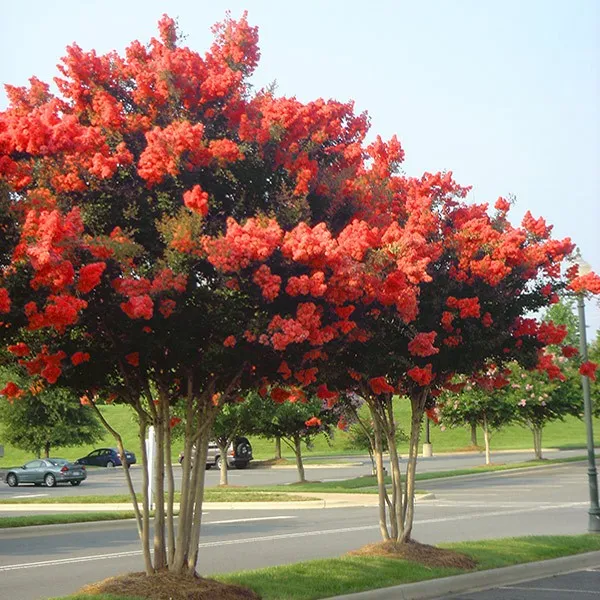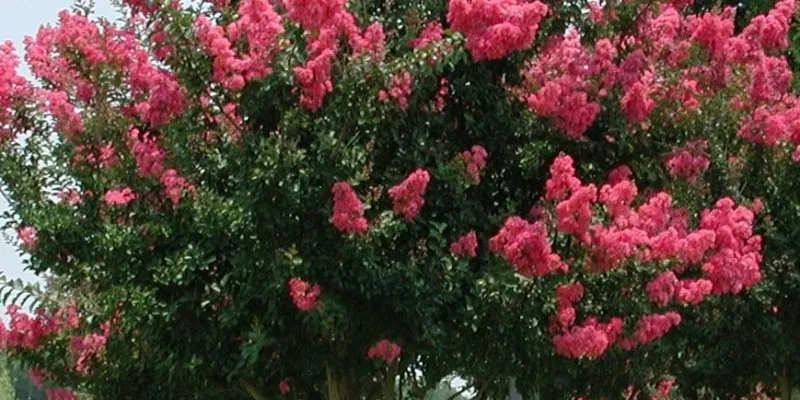While I like all of the plants we use in landscapes, this month is a personal favorite of mine - the Crape Myrtle (or you can spell it Crepe if you want). Crape Myrtle blooms generally in shades of pink, red and purple - but we also have whites that do well too. I really enjoy the fact that they start blooming just as summer starts to kick in. A lot of my other spring blooming shrubs are all done when the Crape Myrtles begin to bloom. Usually, they bloom from early June through the summer and well into Fall. The blooms are large clusters of flowers on all the branch tips. They pack a big punch of color and make a strong visual statement through the summer. As an added bonus the leaves will develop great fall color in oranges, reds and yellows.

Crape Myrtles are well suited to our Gainesville lawn's summers too, which is saying something for the plant. Once established they are drought tolerant and susceptible to few ornamental pests, besides the occasional Aphid. They do require full sun (more than six hours) to bloom their best. Light shade will reduce the amount of bloom and heavier shade will prevent blooming. We fertilize ours just like my other shrubs and perennials with a tree and shrub fertilizer in the fall and spring. We use the granular fertilizers because they work best as they feed slowly for an extended time.
Crape Myrtle generally come in three size categories. The smallest grow up to three feet. Some examples are the Petite series and the Dazzle series. The medium sized ones grow three to five feet and would be varieties such as Peppermint Lace, Velmas Royal Delight, Near East and many others. The largest grow five feet or more. These would be ones like Hopi, Tonto, Zuni, Dynamite, etc.
They are low-maintenance plants/trees, however, I do recommend at least some pruning every year. This will make them fuller, bloom heavier with more new growth and generally give you a neater looking plant without any dead tips showing. Here is a guide for pruning them correctly before they send out new growth.
If this is a plant you would love to see in your landscape design, call our office at 352-378-LAWN or fill out our online landscape request form so we can schedule a meeting to discuss how to make that happen.


